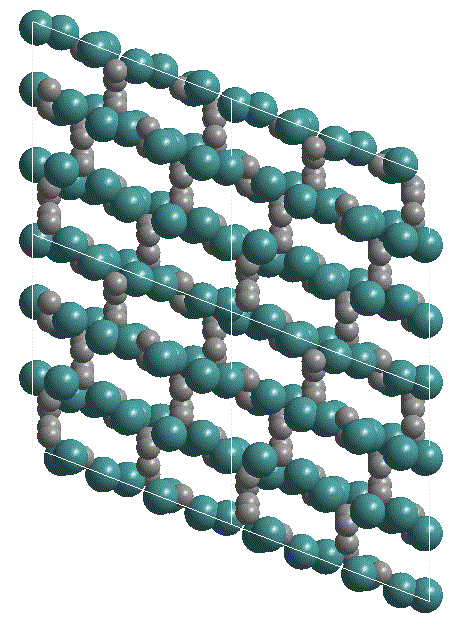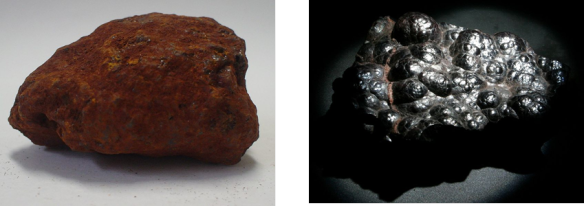A structure determined by Linus Pauling – Hematite
Today (28 February 2014) would have been Linus Pauling's 113th birthday, a great chemist famed for his seminal work on the chemical bond, which won him the 1954 Nobel prize in Chemistry and laid the foundations of molecular biology. His work had implications in many, many scientific fields and today we're presenting the structure of the mineral Hematite that Pauling and a co-worker determined.
What does it look like?

A visualisation of the first structure determination for hematite by Pauling in 1925. The green atoms are Iron and the grey oxygen. It was drawn using the Diamond Visualisation software.
What is it?
Hematite is Fe2O3. It is one of the earliest pigments used by man. It produces an orange-red colour and this mineral's abundance and widespread easily found deposits across the globe has made it one of the most well-known and widely used pigments. As well as being a pigment it is also the main ore of Iron and the principal export of Australia, producing an income of $AUD 57,000 million in 2013.
The name hematite comes from the greek word "hema" which means blood. Hematite varies in colour from silver-black to orange-red and if you have ever got any of the red stuff on your hands, you can immediately see why it is used as a pigment – it sticks to everything and a little bit goes a very long way.

The two commonly recognised morphologies and colours of hematite. Credit: Wikipedia.
The first recorded use of this mineral as a pigment was 164,000 years ago in South Africa and early man used it as a red chalk to write and draw with. It is often found in association with another form of Iron oxide, Ochre. Together with Ochre, hematite is the basis of many red pigments from around the world such as Venetian red, Indian red and Terre Pozzuoli. As a pigment, hematite is considered a permanent pigment – this is one of the reasons for its popularity. This is due to the reactivity of the material. It does not react with most solvents or alkalis and requires an acidic solution for only partial dissolution, thus, it is very stable and persists through long time periods in history. It can dissolve a small amount of oil, which also helps to make it an excellent choice as a pigment in painting.
Where did the structure come from?
The structure of hematite was first determined by Pauling in 1925. This was the fifth structure that Pauling had determined. Also in the paper, he discusses the structure of Corundum and corrects the earlier structure determined by the Braggs.
Pauling, L. and Hendricks, S., The structure of Hematite and Corundum. (1925) Journal of the American Chemical Society 47, 781 – 790.






